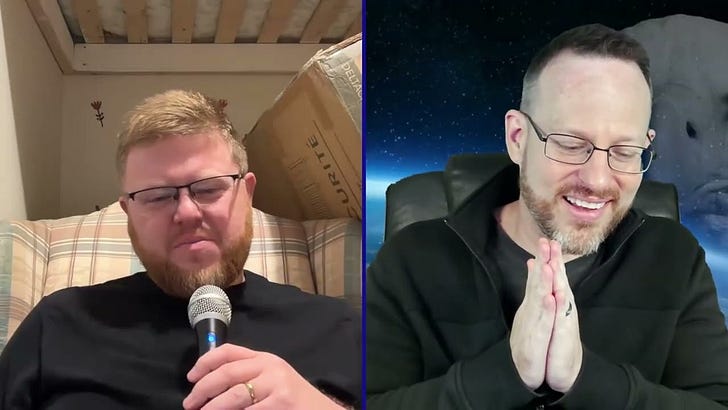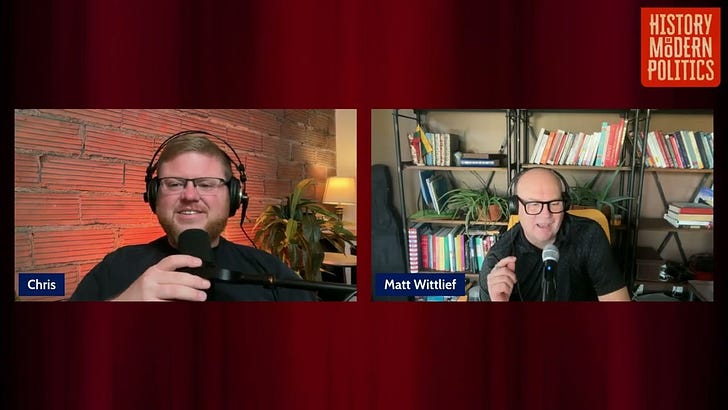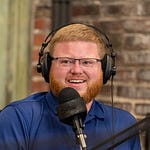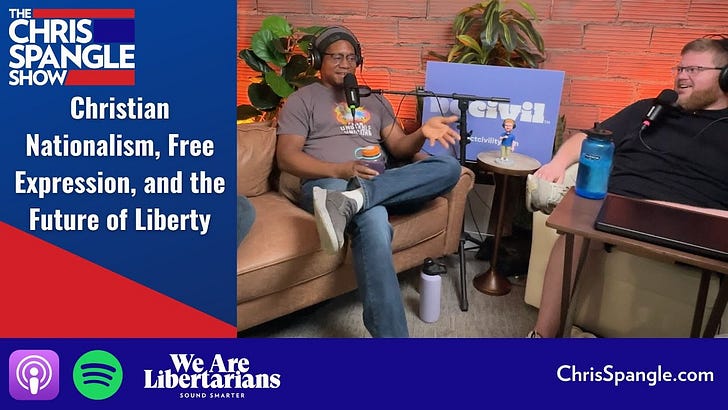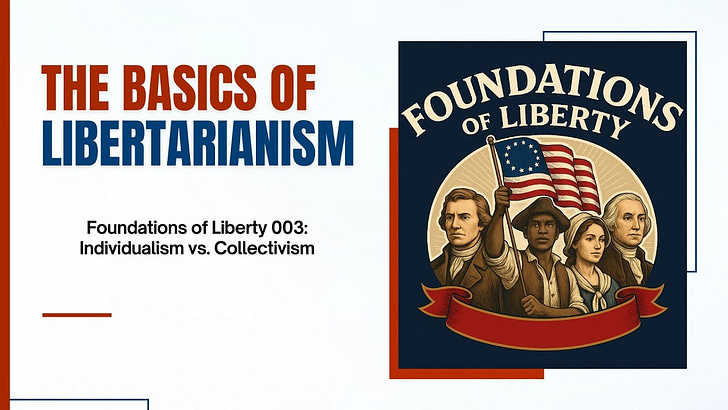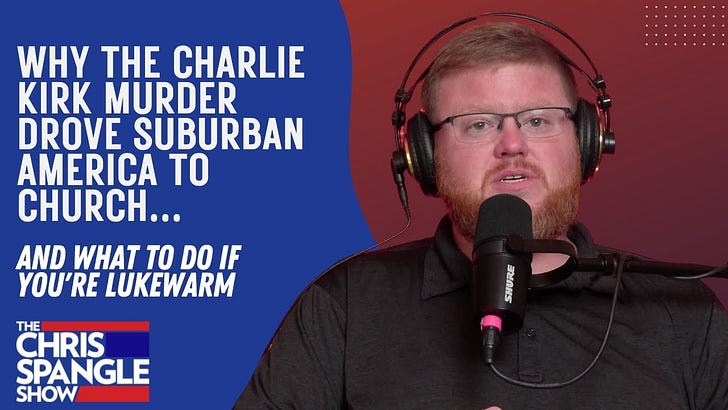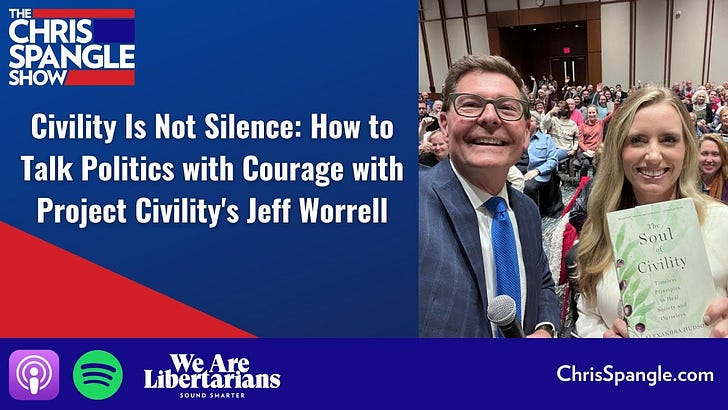Chris Spangle, Harry Price, Rhinehold welcome Professor Alexander Salter, the author of the new book. Money & The Rule of Law, to discuss inflation. What is it? How does it happen? Should we panic and buy gold? What is the Federal Reserve? How did lumber end up 450% more expensive than it was last year? We answer all this and more.
Time Stamps
Inflation - 00:04:04
Senate Republicans Kill January 6th Commission - 01:01:42
Biden Validates Lab Leak Theory - 01:16:08
IU vs. Purdue's Approach to Vaccines - 01:30:29
Our Guest
Alexander Salter is an economics professor in the Rawls College of Business at Texas Tech University and the Comparative Economics Research Fellow at TTU’s Free Market Institute. He is the author of more than 150 academic and popular articles. Salter is the co-author of Money and the Rule of Law: Generality and Predictability in Monetary Institutions from Cambridge University Press, a #1 best seller on Amazon in Macroeconomics.
There’s No Need to Panic over Inflation - https://www.nationalreview.com/2021/05/theres-no-need-to-panic-over-inflation
Twitter - @alexwsalter
Money and the Rule of Law: Generality and Predictability in Monetary Institutions - https://amzn.to/3fx6NPD
Show notes - https://wearelibertarians.com/wp-content/uploads/Inflation.pdf
What is inflation?
Inflation is the decline of purchasing power of a given currency over time.
Purchasing power is the value of a currency expressed in terms of the number of goods or services that one unit of money can buy.
Purchasing power is important because, all else being equal, inflation decreases the number of goods or services one can purchase.
A quantitative estimate of the rate at which the decline in purchasing power occurs can be reflected in the increase of an average price level of a basket of selected goods and services in an economy over a period of time.
Inflation is sometimes classified into three types
Demand-Pull inflation
Cost-Push inflation
Built-In inflation.
While it is easy to measure the price changes of individual products over time, inflation aims to measure the overall impact of price changes for a diversified set of products and services.
It allows for a single value representation of the increase in the price level of goods and services in an economy over a period of time.
A loss in purchasing power impacts the general cost of living for the common public which ultimately leads to a deceleration in economic growth.
A common consensus view among economists is that sustained inflation occurs when a nation’s money supply growth outpaces economic growth.
Following the Spanish conquest of the Aztec and Inca empires, massive amounts of gold and silver flowed into the Spanish and other European economies.
Since the money supply had rapidly increased, the value of money fell, contributing to rapidly rising prices.
Unchecked inflation can topple a country’s economy, like in 2018 when Venezuela’s inflation rate hit over 1,000,000% a month.
Causes of inflation
An increase in the supply of money is the root cause of inflation, though this can play out through different mechanisms in the economy.
Money supply can be increased in different ways, for example monetary authorities can print and give away more money to individuals, it can be devalued
Demand-Pull Effect
Demand-pull inflation occurs when an increase in the supply of money and credit timulates overall demand for goods and services in an economy to increase more rapidly than the economy’s production capacity.
With more money available to individuals, positive consumer sentiment leads to higher spending and this increased demand pulls prices higher.
It creates a demand-supply gap with higher demand and less flexible supply, which results in higher prices.
Cost-Push Effect
Cost-push inflation is when supply of goods or services is limited in some way but demand remains the same, pushing up prices.
Cost-push inflation is a result of the increase in prices working through the production process inputs.
When additions to the supply of money and credit are channeled into commodity or other asset markets and especially when this is accompanied by a negative economic shock to the supply of key commodities, costs for all kinds of intermediate goods rise.
This leads to higher costs for the finished product or service.
For example, when an expansion of the money supply creates a speculative boom in oil prices the cost of energy of all sorts of uses can rise and contribute to rising consumer prices.
Built-In Inflation
Built-in inflation is related to adaptive expectations, the idea that people expect current inflation rates to continue in the future.
As the price of goods and services rises, workers and others come to expect that they will continue to rise in the future at a similar rate and demand more wages to maintain their standard of living.
How is inflation measured?
The chief measures of US inflation are the Consumer Price Index (CPI), the Producer Price Index (PPI), and the Personal Consumption Expenditures Price Index (PCE).
The CPI is a measure that examines the weighted average of prices of a basket of goods and services which are of primary consumer needs including transportations, food, and medical care.
The PPI is a family of indexes that measures the average change in selling prices received by domestic producers of intermediate goods and services over time.
Like the CPI, the PCE tracks how much consumers pay for goods and services. It updates the basket of goods it uses for calculations based on what consumers are actually spending money on each month, rather than limiting data to a fixed set of goods.
The is the preferred measure of inflation used by the Federal Reserve when making monetary decisions.
Extreme Inflation: Hyperinflation and Stagflation
Hyperinflation
This occurs when inflation rises rapidly and the value of the currency of the country tumbles rapidly.
Economists define hyperinflation as taking place when prices rise by at least 50% each month.
Stagflation
This occurs when inflation remains high, but a country’s economy is not growing and its unemployment is rising.
When stagflation happens, prices remain high even as consumer spending decreases, making it increasingly expensive to buy the same goods.
Why is inflation in the news?
Consumer prices jumped 4.2% in the 12 months through to April, up from 2.6% in March and making the biggest increase since September 2008. The CPI rose 0.8% in April, the largest monthly jump in over a decade.
The report from the US Labor Department comes amid fears that rising consumer prices could push up interest rates.
Prices of second-hand cars increased by 10% in comparison with March - the biggest monthly increase since records began.
In the past, rising inflation has usually led to higher pay as workers have demanded and received raises to keep pace.
However, pay raises - if they do occur - typically lag behind price increases, thereby squeezing consumers at least temporarily.
And eventually, pay gains themselves will fuel further inflation with companies raising prices to offset higher wages.
Prices on many things tumbled in March and April of last year, when the pandemic tore through the economy, and have since rebounded.
As a result, year-over-year price increases are much higher than they’ve been in the recent past.
Another factor is a widespread shortage of raw materials and parts that is magnifying costs.
Shortages of lumber, copper, other commodities, semiconductor chips, and even food, have halted production in many industries.
Supply bottlenecks have occurred because companies cannot keep up with demand, after multiple rounds of stimulus checks.
With everyone ramping up at once, manufacturers, shipping firms, miners, and agricultural companies can’t keep up.
Sources:
Inflation - Investopedia - https://www.investopedia.com/terms/i/inflation.asp
How Inflation Erodes the Value of Your Money - Forbes - https://www.forbes.com/advisor/investing/what-is-inflation/
What Causes Inflation and Who Profits From It? - Investopedia - https://www.investopedia.com/ask/answers/111314/what-causes-inflation-and-does-anyone-gain-it.asp
Explainer: Why are fears of high inflation getting worse - https://apnews.com/article/financial-markets-inflation-health-coronavirus-pandemic-business-9b28c435bcaf8f787838ca1160e4d47f
US inflation sees biggest jump since 2008 - BBC - https://www.bbc.com/news/business-57090421
News Block
Senate Republicans kill the Jan. 6 commission by a negative-19 vote margin
It’s clear that a majority of the House supports creating a bipartisan commission to investigate the attack on the U.S. Capitol that occurred on Jan. 6. It passed a bill to do so earlier this month.
It’s clear that a majority of the Senate supports the commission’s creation, too. On Friday, more than 50 senators — representing 32 states and well over half the country’s population — voted to move forward on doing so.
It’s clear that a majority of the public also supports such a commission. Polling has repeatedly demonstrated that, including a YouGov-Economist survey released this week.
But there will be no such commission. That vote in the Senate aimed at ending a Republican filibuster of the proposal to create a commission needed 60 votes. Instead, it only got 54 — 19 more votes than the opposition, but that doesn’t matter under the Senate’s filibuster rules. That there were three votes for ending the filibuster for every vote to maintain it doesn’t matter.
It could have been a 59-to-0 vote, and the commission would still have been blocked. In fact, 11 senators, nine of them Republicans, didn’t bother to vote at all. It didn’t matter.
The commission vote on Friday was aimed at ending a filibuster that blocked the legislation from moving forward. Cloture requires a lower standard of 60 votes — three-fifths of senators — but, as mentioned, supporters of the commission only got 54.
This 60-vote margin only emerged in 1975. Before then, you needed two-thirds of the vote from senators who were present in the room. Were every senator there, that’s the same 67-vote margin as required in the impeachment vote. But on Friday, that would have meant two-thirds of the 89 senators voting … which, coincidentally, meant needing 60 votes.
But there’s nothing set in stone about these rules. It’s not like they’re in the Constitution. Instead, the Senate made them up and can change them as they see fit. So if, for example, the standard set in 1975 had been 60 percent of those present, the cloture vote would have passed and consideration of a commission could have moved forward to a final vote.
Of the 11 senators who didn’t vote on Friday, three — the two Democrats and Sen. Patrick J. Toomey (R-Pa.) — had expressed support for creating the commission. Had all of the absent senators shown up and cast ballots, the result would have been 57-to-43 — equal to the impeachment vote but still insufficient to end the filibuster.
Coronavirus ‘lab leak’ theory jumps from mocked to maybe as Biden orders intelligence review
In the spring of 2020, as the coronavirus ripped through U.S. cities on its way to claiming more than 592,000 American lives, a group of senior U.S. national security officials warily eyed a laboratory in Wuhan, China.
The Wuhan Institute of Virology was well known in the scientific community for its research on coronaviruses to defend against outbreaks like the SARS epidemic, first identified in China in 2002. But to some of the officials, some of whom worked in the State Department and the White House, the lab’s location in the same city where the coronavirus pandemic began was a troubling coincidence.
Over the course of the pandemic, the officials joined forces, searching for information that might show whether the pandemic had been sparked by reckless or sloppy research in the lab, several of the now-former officials and others aware of their work said in interviews. Their search was partly conducted by a State Department group under Secretary Mike Pompeo that had initially examined China’s compliance with international weapons treaties, and then turned its attention to the lab and evidence of suspected Chinese military activity there.
Throughout much of the pandemic, the “lab leak” hypothesis has been ridiculed by scientists as a baseless conspiracy theory, fueled by President Donald Trump in an effort to deflect attention from his administration’s botched pandemic response.
Far from dismissing the lab-leak theory, however, President Biden has told his spies to see if the previous administration’s officials, whose work some of his own skeptical aides have called tendentious and overreaching, may have been right to question the lab and conduct a thorough investigation. The White House recently was told that a large amount of information remained to be examined that could shed light on the question, according to a senior administration official who, like others, spoke on the condition of anonymity to discuss internal deliberations.
Biden stunned security and health experts on Wednesday when he announced that at least one “element” of the intelligence community “leans more toward” a lab accident as the source of the outbreak, as opposed to a natural transference of the virus from an animal to a human.
National security officials in the Trump administration had scoured classified intelligence data, scientific papers and even popular magazine articles trying to determine if the lab-leak hypothesis held water. They found no smoking gun, but they felt the information they had gathered demanded closer scrutiny, said several people who were involved in the effort.
The Wuhan lab’s location in the same city as the outbreak was for many the first point of suspicion. But more alarming was the Chinese government’s response to the outbreak.
Chinese officials seemed more interested in blocking investigations than aiding them, the former officials said. They had moved to silence doctors and journalists from reporting on the spread of the virus, which had appeared to first show up in hospital patients in Wuhan in December 2019.
Across the globe, security and health officials began speculating about the source of the virus shortly after it emerged, one former official said, adding that there was enormous frustration that the Chinese government was not more forthcoming with information and did not immediately allow international investigators into the country.
The evidence that the virus may have emanated from the Wuhan lab was circumstantial, the former officials stressed. Their default assumption, one of them added, which was shared by most scientists, was that the pandemic had begun in nature.
But in the fall of 2020, momentum picked up again. The U.S. intelligence community had obtained information that three workers at the Wuhan lab had fallen ill in November 2019 with symptoms similar to covid, which had sent them to the hospital. Their symptoms were also similar to seasonal illnesses, including the flu, but they’d gotten sick the month before the initial cases of the disease were confirmed in Wuhan.
The officials had also come upon information that the Chinese military had been conducting experiments at the lab for years. That also renewed focus on the lab-leak theory.
“The information about the sick workers was really striking,” said David Feith, who at the time was the deputy assistant secretary of state for East Asian and Pacific affairs.
In the waning days of the Trump administration, the officials mounted an effort to declassify information, including some about the sick lab workers. On Jan. 15, the State Department released a “fact sheet” — vetted by multiple agencies including in the intelligence community — that said the virus could have spread naturally or come from a lab.
It described three categories of activity that pointed to the latter scenario: the report of sick workers; the lab’s history of research on coronaviruses in bats; and findings that the lab had secretly engaged “in classified research, including laboratory animal experiments, on behalf of the Chinese military since at least 2017.”
The fact sheet, short though it is, stands as the most comprehensive public document to date on what the U.S. government knows about a possible lab leak.
Indiana University reconsidering vaccine verification for students
"In yesterday’s opinion, the attorney general affirmed that it is legal for us to require a vaccine, including one under an Emergency Use Authorization (EUA). His opinion questioned specifically the manner in which we gathered proof of vaccination. Although we disagree with that portion of his opinion, we will further consider our process for verifying the requirement," the school said in a statement.
The move to reconsider comes just one day after state Attorney General Todd Rokita (R) slammed the rule, saying that it violates state law.
“This session, members of the Indiana General Assembly passed legislation to codify in law a prohibition on COVID-19 vaccine passports, preventing public institutions from mandating proof of vaccination as a condition for receiving services or employment,” Rokita said on Wednesday.
“Indiana University’s policy clearly runs afoul of state law—and the fundamental liberties and freedoms this legislation was designed to protect,” Rokita added.
Multiple Republican state senators also condemned the university's new policy with 35 out of 39 signing a letter sent to university President Michael McRobbie expressing their disapproval.
Old Golden Ticket Vaccination Drawing
https://protect.purdue.edu/vaccine-information/golden-ticket-drawing/
For 10 Boilermakers, COVID-19 vaccination will be the golden ticket to winning $9,992 — the equivalent of a year’s undergraduate tuition cost for an in-state Boilermaker since 2013 — minus the hunt for chocolate bars.
Ten students who submit valid proof that they are fully vaccinated against COVID-19 by July 15 will be randomly selected and announced by July 29.
The drawing is open to current and admitted students enrolled for the fall 2021 semester on the West Lafayette campus. All undergraduate, graduate student and professional degree-seeking students, regardless of residency, are eligible to enter and win.





